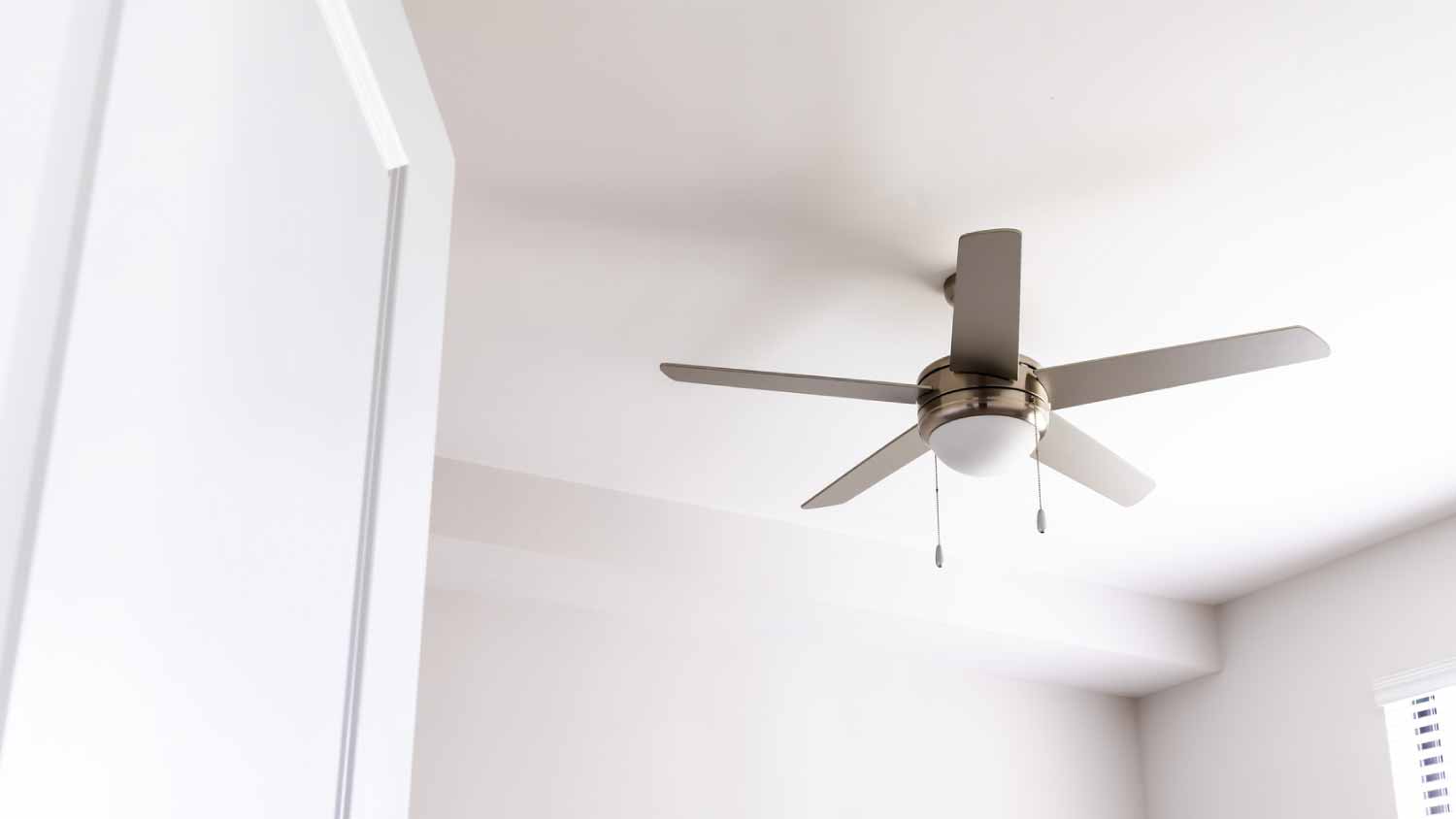How to Install a Duct Booster Fan: A Quick Solution to Indoor Temperature Issues
Bring the heat (or the cool) more quickly with a simple device


- Power drill
- Tin snips (optional)
- Circular saw (optional)
- Safety glasses (optional)
- Register booster fan
- Duct boot (optional)
- Screws
If certain rooms in your home are noticeably warmer or cooler than others, you may consider a duct booster fan. These fans pull more air to the rooms farthest from your HVAC system to heat or cool them more evenly. The simplest type, the register fan, can be installed as a DIY project. This guide explains how to install a duct booster fan and why you might need one.
Measure the Register
Before purchasing your register duct booster fan, remove the register cover by unscrewing it with your drill. Use your tape measure to measure the length and width of the opening, not including the flange or lip that holds the cover in place. With your air register size in hand, you can purchase the correct size fan. Most air registers are one of four standard sizes:
4” by 10”
4” by 12”
6” by 10”
6” by 12”
However, if you measure your register and it’s not one of these sizes, you may have to modify the opening to fit whatever fan you buy.
Replace the Undersized Duct Boot
If your duct size is non-standard, you'll need to replace the duct boot in your floor with a standard size to install a register fan. This step adds significant complexity and requires confidence in using a power saw and removing and reinstalling flooring materials.
If you have real hardwood floors, we don't recommend moving forward as a DIY. Instead, hire an HVAC pro to assist with an inline duct booster fan installation. If you have carpet or vinyl floors and feel comfortable with carpentry, you may still be able to DIY, but it’ll be challenging.
Cut Through the Subflooring
Purchase a right-angle duct boot that matches the size of your register fan. Remove the floor covering around the duct and mark the floor joists on either side of the duct. Set your circular saw cutting depth to cut through the subfloor and any underlayment, then remove the flooring materials.
Replace the Old Duct Boot
Unscrew and remove the existing duct boot. You may need to use tin snips to cut the old boot apart if the screws are not easy to access. Swap in the new boot.
Enlarge the Floor Opening
Cut the flooring pieces you removed to fit the new boot opening in your floor, then reinstall the flooring.
Install the Duct Booster Fan
 Photo: Grispb / Adobe Stock
Photo: Grispb / Adobe StockPlace the register booster fan on top of the register by dropping the fan into the boot. Secure it to the floor on either side using screws. Plug the fan's power cord into the nearest receptacle and turn it on. Ensure that the fan does not rattle during operation. If it does, tighten the screws.
Avoiding Duct Booster Fan Installation Mistakes
The biggest mistake homeowners make with duct booster fans is installing them without first getting a full HVAC system inspection. A properly sealed duct system designed for the home's current HVAC system should not need a duct booster fan.
An HVAC technician can assess your system and diagnose airflow problems causing uneven temperatures in your home. These may include:
Clogged or leaking ducts
Improper ductwork installation
A lack of duct insulation
A wrong-sized HVAC system
When to Install a Duct Booster Fan
Duct booster fans can be helpful in older homes that aren’t designed to handle newer HVAC systems. They can also help alleviate minor heating and cooling problems occurring in specific rooms.
However, duct booster fans generally won’t solve airflow issues throughout the home, which can be caused by leaky or clogged ducts, worn-out HVAC components, or improperly sized systems. You should consult an HVAC technician before installation since a duct fan can sometimes put more strain on an already inefficient system.
DIY vs. Hiring a Pro
DIY installation of a register duct booster fan can be a simple project that costs $50 to $100. However, some registers will require cutting into flooring. Other booster fan types involve wiring electrical connections and disassembling ductwork. These are more complex tasks, and mistakes can be costly.
Professional duct booster fan installation costs $180 to $300, but it’s preferable since a local duct installer will assess your system for other problems. A booster fan used to cover other issues can cause your HVAC system to work harder than needed. Your installer may suggest other repairs or changes to improve HVAC efficiency and prevent costly long-term problems.
Frequently Asked Questions
A register duct booster fan should be installed in the room farthest from your HVAC system. If you're installing an in-line duct booster fan, the best location will vary based on the manufacturer's instructions. Often, in-line duct booster fans are installed in the duct several feet away from the register to which they're boosting air.
Yes, duct booster fans enhance airflow to a room, but they aren't a good long-term solution. Even when sized and installed correctly, a duct booster fan won't solve underlying HVAC issues. A full HVAC inspection by an experienced technician can identify issues like leaks or wear that would resolve airflow problems and enhance HVAC efficiency.
No, duct booster fans don't run all the time unless they're programmed to. Some fan models might run constantly, but most fans are controlled by the user either via controls on the unit, a switch wired to the unit, or a thermostat. This uses less energy and allows you to activate the fan only when needed, such as when a room is not heating or cooling evenly.





- Furnace Repair
- Air Conditioning Repair
- HVAC Repairs
- Furnace Installation
- Wood & Pellet Stove Repair
- Dehumidifier & Humidifier Repair
- Heat Pump Companies
- Swamp Cooler Repair
- Wood Stove Services
- HVAC Companies
- Commercial A/C Repair
- Geothermal Installation
- Air Conditioning Installation
- Boiler Repair
- 24 Hour Furnace Repair
- Geothermal Repair
- Heat Pump Repair
- Humidifier Installation
- Thermostat Repair
- Thermostat Installation
- Nest Installation
- Heating & Cooling
- Heating Repair
- Furnace Cleaning
- Furnace Tune-Up
- HVAC Technicians
- Subcontractors
- Furnace Maintenance
- Plumbing & Heating Companies
- Wood Stove Inspection
- Mini Split Installation
- Wall Heater Repair
- Duct Installers















